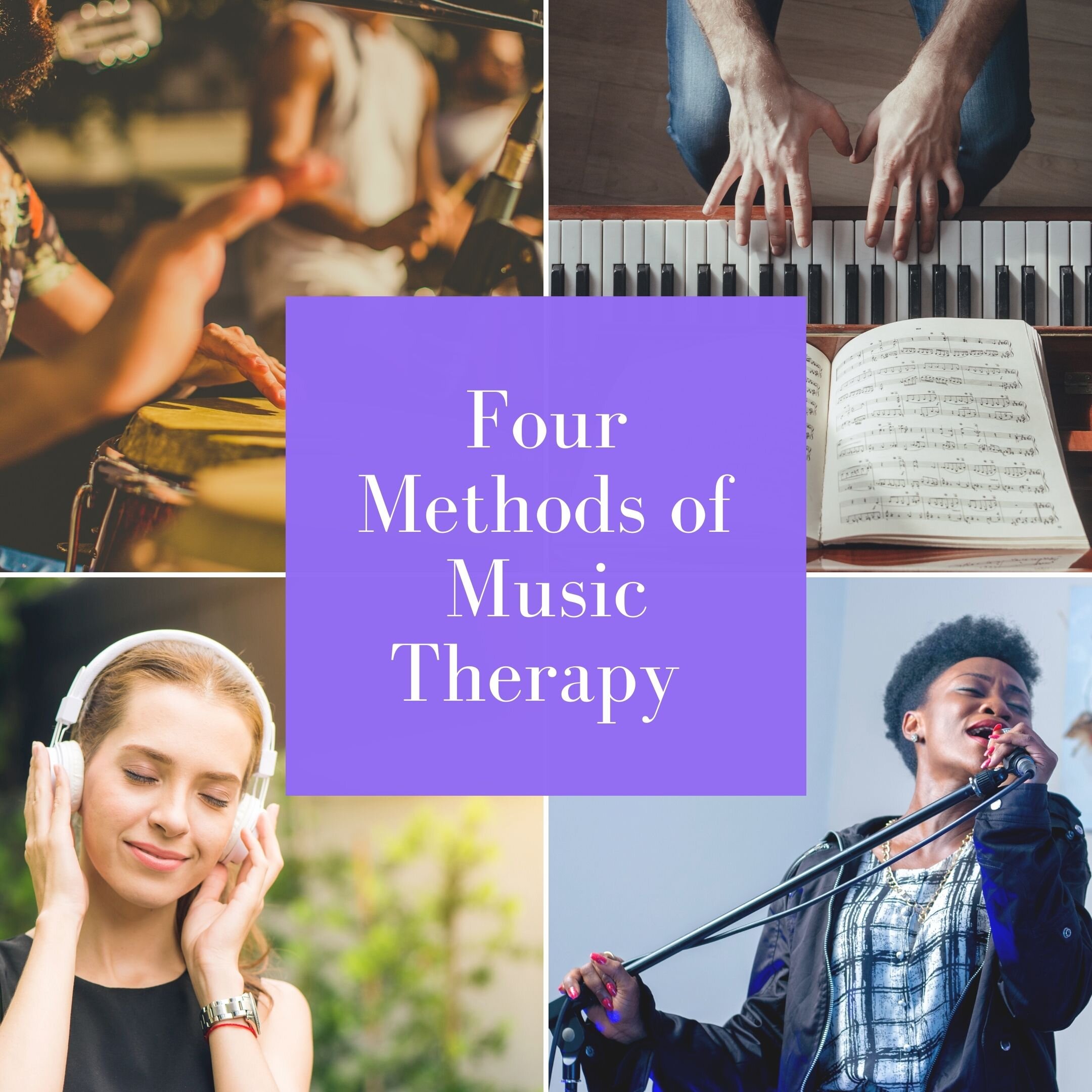Four Methods of Music Therapy
When people ask me about music therapy, one of the questions I often hear is, “So, what do you do in a session?” My first consideration is always the client, their needs and goals, and their musical preferences. After I collect this information in my assessment, I can then narrow the scope of what I might include in a session. As music therapists, we do not have one main intervention that we use. There are a variety of different music experiences we can engage our clients in to meet their goals. Generally, music therapy consists of four main methods- receptive, re-creative, improvisation, and composition. These methods can be utilized in numerous variations- some of which are described below.
The receptive method typically consists of listening to music in some fashion. This can include listening to live or recorded music. Listening to music may be the main form of therapy in a session. For example, for relaxation or pain relief. In other cases, listening to music may then segway into a therapeutic discussion regarding song themes or processing emotions brought up during the song. The receptive method provides opportunity for movement to music or dancing as well.
The re-creative method of music therapy includes recreating music that already exists. For example, singing a favorite song or playing instruments as a group to popular tunes. There are many benefits to actively making music such as improved motor skills, orientation to reality, social interaction, memory recall, breath support, and relaxation.
The improvisation method is not as intimidating as it might sound. Improvisation could be as complicated as improvising a melody or as simple as clapping a short rhythm. Improvisation can be experienced through spontaneous use of the voice, instruments, body percussion, or making any kind of sound in the environment! It can also be enjoyed by an individual playing solo or with a group such as in a call-and-response. Improvisation can be a wonderful medium for self-exploration, emotional awareness, and communicating with others in the moment.
One does not need to be a seasoned songwriter to engage in the composition method of music therapy. Like improvisation, composition ranges in complexity. A client might write an entire song (lyrics and instrumentals), play it, and then talk about it with the music therapist. Composition can also be sharing one word ideas to fill-in-the-blank of a well known song lyric. Instead of “All you need is love,” a client might say, “All you need is chocolate!” Composition can also be a way of creating legacy projects as a gift for loved ones through music collages or heartbeat recordings.
Depending on the client, music therapy sessions can include a wide variety of methods to best meet client goals in the moment.
For more information about music therapy or to schedule a session, contact us.
References:
Gardstrom, S., & Sorel, S. (2015). Music therapy methods. In B. Wheeler (Ed.), Music therapy handbook (pp. 116-127). The Guilford Press.
Stanborough, R.J. (2020, November 10). 10 ways that singing benefits your health. Healthline. https://www.healthline.com/health/benefits-of-singing#benefits
